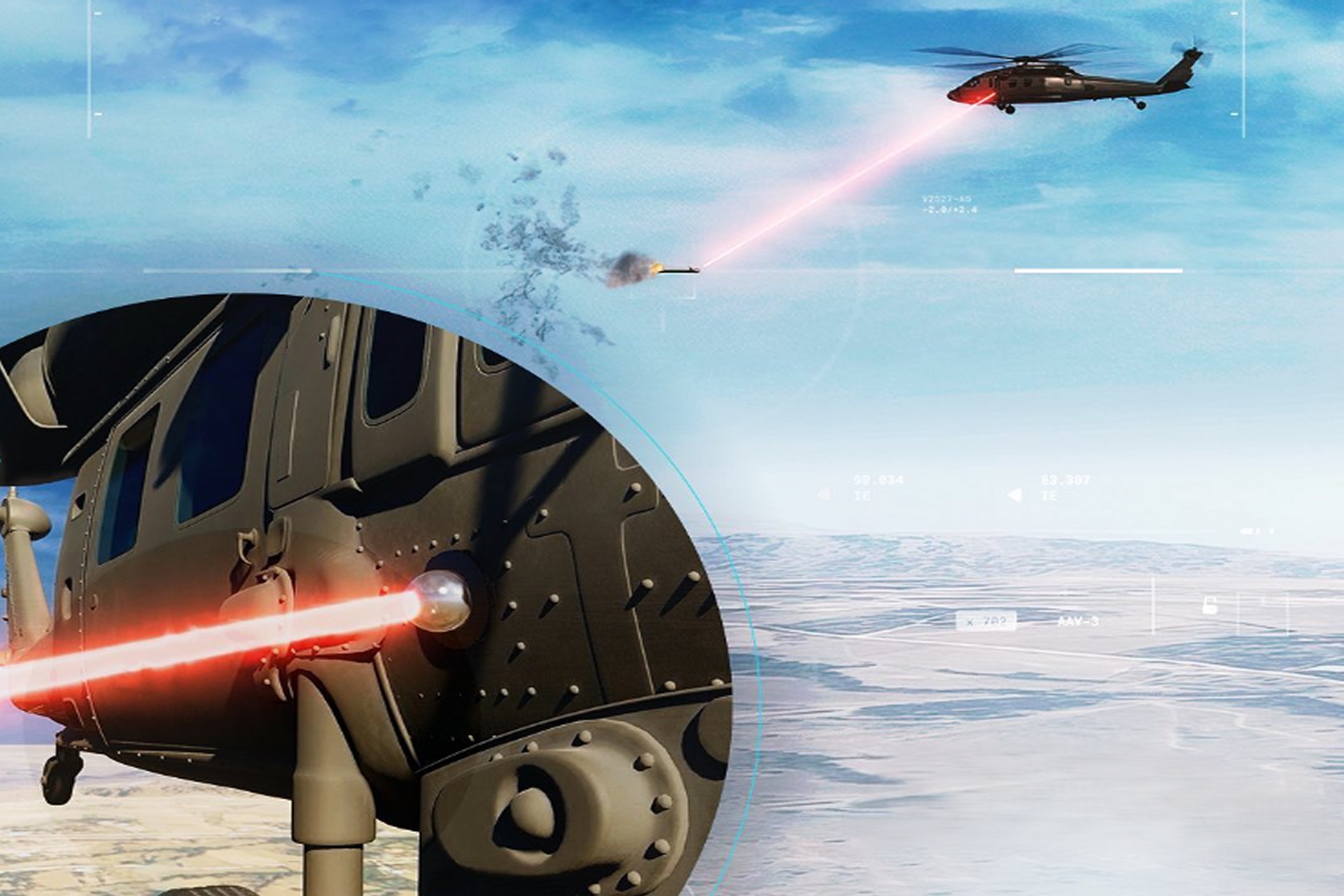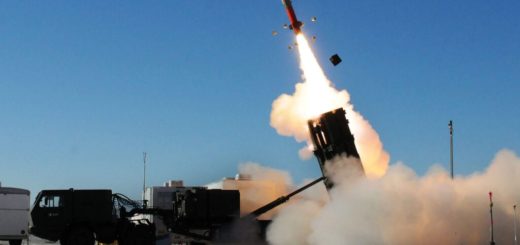Technology: ASELSAN’s Successful YILDIRIM-100 Countermeasure Test Enables Air Assets to Neutralize Infrared Missile Threats

{loadposition bannertop}
{loadposition sidebarpub}
On 4th of July, 2025, ASELSAN’s YILDIRIM-100 Directed Infrared Countermeasure (DIRCM) System achieved a major milestone, successfully completing tests designed to deflect live infrared-guided missiles targeting helicopters. This breakthrough, reported by ASELSAN, marks a significant leap forward in Türkiye’s ability to safeguard its rotary-wing fleet and future assets like the KAAN next-generation fighter. By mastering an advanced capability that only a few nations possess, ASELSAN reaffirms its role in strengthening the country’s defense self-sufficiency. The successful demonstration shows how cutting-edge laser countermeasures can ensure survivability against modern threats, making this achievement both relevant and critical in today’s contested airspaces.Follow Army Recognition on Google News at this link
YILDIRIM-100’s successful test has far-reaching implications for Türkiye’s defense posture. By boosting the protection of helicopters operating in contested regions, the system directly enhances Türkiye’s operational reach and deterrence (Picture source: Aselsan)
Developed by Türkiye’s leading defense company ASELSAN, the YILDIRIM-100 DIRCM is a sophisticated self-protection system that uses multi-band directed laser beams to blind the seekers of incoming infrared-guided missiles, particularly MANPADS that pose one of the most dangerous threats to helicopters. Unlike older countermeasure suites that rely heavily on flares and radiofrequency jammers, YILDIRIM-100 employs dual laser turrets and a precision tracking unit to simultaneously detect, track, and neutralize multiple incoming threats. The system integrates seamlessly with any missile warning system, providing helicopter crews with an automatic, fast-reacting shield that drastically improves their chances of survival in high-risk operational environments.
The YILDIRIM-100 project has its roots in Türkiye’s wider push to enhance the survivability of its airborne platforms, following earlier initiatives like the Helicopter Electronic Warfare System (HEWS). While HEWS brought a critical layer of protection through passive sensors and expendable countermeasures, YILDIRIM-100 represents a generational leap with active laser jamming technology. Years of research, design refinement, and live-fire trials have culminated in the system’s ability to deflect live warhead-equipped missiles in test scenarios. This milestone builds confidence for its eventual deployment on Turkish helicopters and as a precursor to the YILDIRIM-300 variant being planned for the KAAN fighter jet, which will require higher power output and faster reaction times to defeat advanced air-to-air missiles.
Compared to legacy infrared countermeasure systems, YILDIRIM-100 stands out with its twin-turret configuration, multi-band laser output, and low power consumption, ensuring high availability and reduced maintenance in the field. Historically, only a handful of countries, like the United States with its Common Infrared Countermeasure (CIRCM) program, have fielded comparable DIRCM capabilities. By indigenously developing YILDIRIM-100, Türkiye joins this select group while tailoring its system to the specific needs of both rotary and fixed-wing platforms. The combination of real-time tracking, synchronized laser emission, and robust integration with existing warning systems places YILDIRIM-100 ahead of many older jamming suites that lack such precision and multi-threat engagement capacity.
Strategically, YILDIRIM-100’s successful test has far-reaching implications for Türkiye’s defense posture. By boosting the protection of helicopters operating in contested regions, the system directly enhances Türkiye’s operational reach and deterrence. It also contributes to the broader survivability architecture envisioned for the KAAN next-generation fighter, demonstrating Türkiye’s growing self-reliance in critical defense technologies. Regionally, this capability strengthens the Turkish Armed Forces’ ability to operate in high-threat environments where man-portable air defense systems and sophisticated missile arsenals proliferate. Geopolitically, ASELSAN’s technological leap positions Türkiye not only as an operator but also as a potential exporter of advanced DIRCM solutions in a niche domain where few reliable suppliers exist.
From a budgetary perspective, the YILDIRIM-100 benefits from years of sustained investment under Türkiye’s indigenous defense programs. The system is part of ASELSAN’s multi-year development roadmap tied to helicopter modernization and new-generation fighter protection. ASELSAN has already secured its first contracts to integrate the system into national helicopter fleets, and ongoing collaboration with the Turkish Aerospace Industries (TAI) for the KAAN program suggests the YILDIRIM family will become a cornerstone of future air asset survivability suites. The company’s consistent progress and government backing underscore its ambition to anchor Türkiye’s place among nations capable of delivering high-end laser countermeasure technologies.
This successful test of the YILDIRIM-100 not only demonstrates ASELSAN’s commitment to pushing the boundaries of indigenous defense technology but also signals a crucial step towards ensuring the protection of Türkiye’s air power for decades to come. As ASELSAN continues to refine its DIRCM family, helicopters flying risky missions and the cutting-edge KAAN fighter will benefit from a proven, mission-ready layer of active defense, giving Turkish pilots the edge they need in modern battlefields dominated by advanced missile threats.

{loadposition bannertop}
{loadposition sidebarpub}
On 4th of July, 2025, ASELSAN’s YILDIRIM-100 Directed Infrared Countermeasure (DIRCM) System achieved a major milestone, successfully completing tests designed to deflect live infrared-guided missiles targeting helicopters. This breakthrough, reported by ASELSAN, marks a significant leap forward in Türkiye’s ability to safeguard its rotary-wing fleet and future assets like the KAAN next-generation fighter. By mastering an advanced capability that only a few nations possess, ASELSAN reaffirms its role in strengthening the country’s defense self-sufficiency. The successful demonstration shows how cutting-edge laser countermeasures can ensure survivability against modern threats, making this achievement both relevant and critical in today’s contested airspaces.
YILDIRIM-100’s successful test has far-reaching implications for Türkiye’s defense posture. By boosting the protection of helicopters operating in contested regions, the system directly enhances Türkiye’s operational reach and deterrence (Picture source: Aselsan)
Developed by Türkiye’s leading defense company ASELSAN, the YILDIRIM-100 DIRCM is a sophisticated self-protection system that uses multi-band directed laser beams to blind the seekers of incoming infrared-guided missiles, particularly MANPADS that pose one of the most dangerous threats to helicopters. Unlike older countermeasure suites that rely heavily on flares and radiofrequency jammers, YILDIRIM-100 employs dual laser turrets and a precision tracking unit to simultaneously detect, track, and neutralize multiple incoming threats. The system integrates seamlessly with any missile warning system, providing helicopter crews with an automatic, fast-reacting shield that drastically improves their chances of survival in high-risk operational environments.
The YILDIRIM-100 project has its roots in Türkiye’s wider push to enhance the survivability of its airborne platforms, following earlier initiatives like the Helicopter Electronic Warfare System (HEWS). While HEWS brought a critical layer of protection through passive sensors and expendable countermeasures, YILDIRIM-100 represents a generational leap with active laser jamming technology. Years of research, design refinement, and live-fire trials have culminated in the system’s ability to deflect live warhead-equipped missiles in test scenarios. This milestone builds confidence for its eventual deployment on Turkish helicopters and as a precursor to the YILDIRIM-300 variant being planned for the KAAN fighter jet, which will require higher power output and faster reaction times to defeat advanced air-to-air missiles.
Compared to legacy infrared countermeasure systems, YILDIRIM-100 stands out with its twin-turret configuration, multi-band laser output, and low power consumption, ensuring high availability and reduced maintenance in the field. Historically, only a handful of countries, like the United States with its Common Infrared Countermeasure (CIRCM) program, have fielded comparable DIRCM capabilities. By indigenously developing YILDIRIM-100, Türkiye joins this select group while tailoring its system to the specific needs of both rotary and fixed-wing platforms. The combination of real-time tracking, synchronized laser emission, and robust integration with existing warning systems places YILDIRIM-100 ahead of many older jamming suites that lack such precision and multi-threat engagement capacity.
Strategically, YILDIRIM-100’s successful test has far-reaching implications for Türkiye’s defense posture. By boosting the protection of helicopters operating in contested regions, the system directly enhances Türkiye’s operational reach and deterrence. It also contributes to the broader survivability architecture envisioned for the KAAN next-generation fighter, demonstrating Türkiye’s growing self-reliance in critical defense technologies. Regionally, this capability strengthens the Turkish Armed Forces’ ability to operate in high-threat environments where man-portable air defense systems and sophisticated missile arsenals proliferate. Geopolitically, ASELSAN’s technological leap positions Türkiye not only as an operator but also as a potential exporter of advanced DIRCM solutions in a niche domain where few reliable suppliers exist.
From a budgetary perspective, the YILDIRIM-100 benefits from years of sustained investment under Türkiye’s indigenous defense programs. The system is part of ASELSAN’s multi-year development roadmap tied to helicopter modernization and new-generation fighter protection. ASELSAN has already secured its first contracts to integrate the system into national helicopter fleets, and ongoing collaboration with the Turkish Aerospace Industries (TAI) for the KAAN program suggests the YILDIRIM family will become a cornerstone of future air asset survivability suites. The company’s consistent progress and government backing underscore its ambition to anchor Türkiye’s place among nations capable of delivering high-end laser countermeasure technologies.
This successful test of the YILDIRIM-100 not only demonstrates ASELSAN’s commitment to pushing the boundaries of indigenous defense technology but also signals a crucial step towards ensuring the protection of Türkiye’s air power for decades to come. As ASELSAN continues to refine its DIRCM family, helicopters flying risky missions and the cutting-edge KAAN fighter will benefit from a proven, mission-ready layer of active defense, giving Turkish pilots the edge they need in modern battlefields dominated by advanced missile threats.






